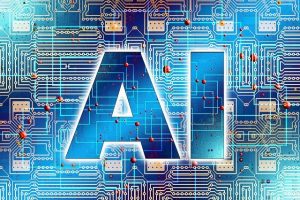
What Artificial Intelligence Is All About
Artificial intelligence is one of the most desirable buzzwords in technology right now, and for a good reason. Several discoveries and advancements previously only imagined in science fiction have progressed in the past few years.
Experts see artificial intelligence as a factor of production with the potential to change how work is done across industries and open up new avenues for growth. This analysis estimates that by 2035, AI will have contributed $15.7 trillion to the global economy. With over 70% of the worldwide effect, China and the United States benefit the most from the upcoming AI boom.
What is artificial intelligence?
Artificial intelligence simulates the human intellect in machines designed to think and behave like people. The phrase can also describe any computer with traits similar to humans, such as learning and problem-solving.
Artificial intelligence’s ideal quality is its capacity to reason through and carry out actions with the highest probability of achieving a given objective. A subset of AI known as ML refers to the idea that computer programmes can automatically learn from and adjust to new data without the help of humans. Deep learning techniques enable autonomous learning by ingesting vast quantities of unstructured data, including text, images, and video.
What are the applications of AI?
The applications for artificial intelligence are endless. The technology applies to numerous fields and industries. AI is being pushed and used in the healthcare industry to administer medication, treat specific patients, and aid surgical operations in the operating room.
Self-driving cars and chess-playing computers are two further examples of artificially intelligent machines. Each of these machines must think through the effects of every action they do because every step impacts the outcome. To win the game is the objective of chess. To act in a way that avoids a collision, self-driving car computers must calculate all external data and consider it.
A bank’s fraud department can benefit from using artificial intelligence to identify and highlight behaviours in banking and finance, such as unique debit card use and sizable account contributions. Artificial intelligence applications are also being used to speed up and streamline trading. This is achieved by simplifying securities’ supply, demand, and pricing estimation.
Broad types of AI
There are two main categories of artificial intelligence:
1. Narrow AI
Today’s computers exhibit narrow AI, which refers to intelligent systems that have been taught or trained to perform particular tasks without having been specifically programmed to do so.
The speech and language recognition capabilities of the Siri virtual assistant on the Apple iPhone, the visual recognition technology used in self-driving cars, and recommendation engines that suggest what you might like based on past purchases are all examples of this artificial intelligence. These systems are known as narrow AI because, unlike humans, they can only learn or be taught how to carry out specific tasks.
2. General AI
General artificial intelligence (general AI) is very different from this and is the type of adaptable intelligence found in humans. It is a loose form of intelligence capable of learning to perform vastly different tasks, such as cutting hair, creating spreadsheets, or debating various subjects, based on its accumulated experience.
This kind of AI is portrayed in movies like HAL in 2001 or Skynet in The Terminator, but it is not currently a reality, and opinions among AI scientists are mixed as to when it will be.
What are the other types of AI?
The several types of AI include the following:
1. Just Reactive
These machines exclusively specialise in one type of task and have no memory or data to operate with. For instance, the computer watches the moves in a chess game and uses its best judgement to win.
2. Insufficient Memory
These devices gather historical data and store it in memory. Although they have little memory, they have enough experience or knowledge to make wise decisions. For instance, this system can suggest a restaurant based on the geographic information gathered.
3. Mind-Body Theory
This AI can comprehend concepts and feelings and engage in social interactions. However, such a device has not yet been developed.
4. Self-Aware
These new technologies’ self-aware machines will be the next generation. They will be intelligent, conscious, and aware.
How will AI change the future?
1. Robots and automatic cars
There is a logical connection between robotics and AI because autonomous behaviour and the ability to comprehend and navigate their surroundings are robot goals. While AI is one of the technologies used in robotics, it is helping robots expand into new applications like self-driving cars and delivery robots and assisting robots in learning new skills.
2. Speech and language recognition
With machine learning techniques, computers can recognise what people are saying with about 95% accuracy. Microsoft’s Artificial Intelligence and Research group recently developed a system that can accurately translate spoken English.
Speaking to computers will probably become more commonplace alongside more conventional forms of human-machine connection as researchers aim for 99% accuracy.
3. Healthcare
In the future, AI may significantly impact healthcare, helping radiologists find cancer in x-rays, researchers find genetic sequences linked to diseases, and finding compounds that may lead to more successful medicines. The current advancement in Google’s AlphaFold 2 machine-learning algorithm is expected to reduce the time needed during a crucial stage in developing new treatments from months to hours.
4. AI and global warming
The scale of machine-learning models and the datasets required to train them to expand in lockstep, as does the carbon footprint of the huge compute clusters that form and run these models. On the effects of powering and cooling massive compute farms on the environment, the World Economic Forum issued research in 2018.
5. Fake news
We are close to creating neural networks that can accurately reproduce speech or create photorealistic images. It carries the potential for highly disruptive social upheaval, such as people losing faith in the integrity of audio or video footage. Concerns have also been raised regarding how these technologies will be used to steal people’s photos, as methods to splice renowned faces into sex scenes convincingly have already been developed.
Final words
A wide range of applications today use AI to varying degrees of sophistication. Popular AI applications include chatbots on websites or in the form of smart speakers and offer algorithms that indicate what you might like next (e.g., Alexa or Siri). AI is utilised to speed up production processes, minimise cognitive labour duplication, and create weather and financial forecasts (e.g., tax accounting or editing). AI is used for various tasks, including language comprehension, autonomous vehicle driving, and gameplay.


